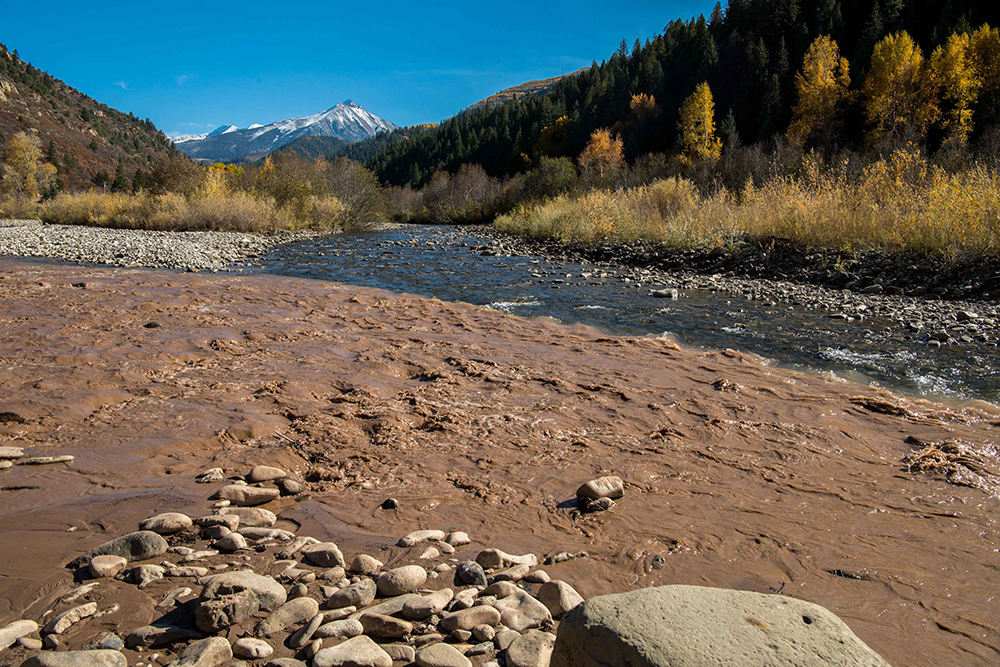Reclamation
>
News & Multimedia
>
news release
>
Reclamation invests $3.3 million for internal applied science projects to improve modeling, forecasting and data tools
news release ARCHIVE
 Understanding and estimating sedimentation in rivers and reservoirs is one of the applied science tools that Reclamation will fund with this announcement.
Return to top
Understanding and estimating sedimentation in rivers and reservoirs is one of the applied science tools that Reclamation will fund with this announcement.
Return to top
Reclamation invests $3.3 million for internal applied science projects to improve modeling, forecasting and data tools
Media Contact:
Peter Soeth, 303-445-3615, psoeth@usbr.gov
For Release: Sep 11, 2020
 Understanding and estimating sedimentation in rivers and reservoirs is one of the applied science tools that Reclamation will fund with this announcement.
Understanding and estimating sedimentation in rivers and reservoirs is one of the applied science tools that Reclamation will fund with this announcement.
WASHINGTON - The Bureau of Reclamation Commissioner Brenda Burman announced that Reclamation will invest $3.3 million in 21 projects for WaterSMART Internal Applied Science Tools that build technical capacity within Reclamation.
"Information gained from these applied science tools will allow Reclamation and our partners to use best-available science for optimal water management under variable hydrologic conditions," Commissioner Burman said. "The projects announced today will help inform specific water management decisions throughout the West."
This program supports the Department of the Interior’s commitment to meeting the President's Memorandum on Promoting the Reliable Supply and Delivery of Water in the West.
A project will assist New Mexico and reservoirs throughout the West. It will receive $199,764 to implement a known model to simulate regional climate and physical processes to estimate daily, monthly and annual evaporation across Elephant Butte Reservoir. These estimates will be compared to alternative estimates. The results will be used by the Albuquerque Area Office to support operations, to facilitate method comparison and identify future planning, operational and research needs on the topic. It will help with the development of alternative evaporation estimation techniques, production of daily evaporation time series at a reservoir and a broadening of weather prediction modeling capabilities.
Another project in Arizona will receive $200,000 to enhance precipitation and soil monitoring information in the Aravaipa watershed northeast of Tucson. Currently, there are only two weather stations within the watershed. The project includes the installation of two stations to monitor precipitation and soil moisture, which will better inform the Natural Resources Conservation Service forecasting models and United States Geological Survey surface water models. The work proposed in this project will help Reclamation and local partners predict flood risk, drought, erosion, and water quality concerns and better plan mitigation of these water management issues.
A third project will receive $120,000 to do predictive modeling to generate maps of invasive quagga and zebra mussel risk. The results will allow Reclamation to dedicate limited resources to high-risk locations and prepare facilities for potential control costs.
To view a complete list of projects, please visit www.usbr.gov/watersmart/appliedscience.
Applied Science Tools are part of the WaterSMART Program. Through WaterSMART, Reclamation works cooperatively with states, tribes and local entities as they plan for and implement actions to increase water supply reliability through investments to modernize existing infrastructure and attention to local water conflicts. Visit www.usbr.gov/watersmart to learn more.
"Information gained from these applied science tools will allow Reclamation and our partners to use best-available science for optimal water management under variable hydrologic conditions," Commissioner Burman said. "The projects announced today will help inform specific water management decisions throughout the West."
This program supports the Department of the Interior’s commitment to meeting the President's Memorandum on Promoting the Reliable Supply and Delivery of Water in the West.
A project will assist New Mexico and reservoirs throughout the West. It will receive $199,764 to implement a known model to simulate regional climate and physical processes to estimate daily, monthly and annual evaporation across Elephant Butte Reservoir. These estimates will be compared to alternative estimates. The results will be used by the Albuquerque Area Office to support operations, to facilitate method comparison and identify future planning, operational and research needs on the topic. It will help with the development of alternative evaporation estimation techniques, production of daily evaporation time series at a reservoir and a broadening of weather prediction modeling capabilities.
Another project in Arizona will receive $200,000 to enhance precipitation and soil monitoring information in the Aravaipa watershed northeast of Tucson. Currently, there are only two weather stations within the watershed. The project includes the installation of two stations to monitor precipitation and soil moisture, which will better inform the Natural Resources Conservation Service forecasting models and United States Geological Survey surface water models. The work proposed in this project will help Reclamation and local partners predict flood risk, drought, erosion, and water quality concerns and better plan mitigation of these water management issues.
A third project will receive $120,000 to do predictive modeling to generate maps of invasive quagga and zebra mussel risk. The results will allow Reclamation to dedicate limited resources to high-risk locations and prepare facilities for potential control costs.
To view a complete list of projects, please visit www.usbr.gov/watersmart/appliedscience.
Applied Science Tools are part of the WaterSMART Program. Through WaterSMART, Reclamation works cooperatively with states, tribes and local entities as they plan for and implement actions to increase water supply reliability through investments to modernize existing infrastructure and attention to local water conflicts. Visit www.usbr.gov/watersmart to learn more.

